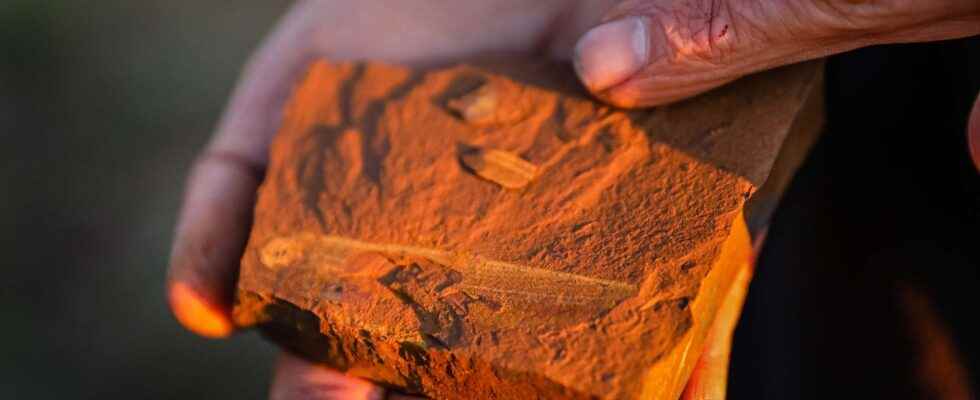Most of the fossils come from vertebrates. The recent discovery in Australia of plant, insect and fragile tissue fossils is therefore exceptional and allows us to understand biotic relationships in past ecosystems.
You will also be interested
[EN VIDÉO] Travel to the heart of the Australian depths as if you were there Take a front-row seat on an underwater exploration expedition off the coast of Australia. The Western Australian Museum takes you to discover the Ningaloo Reef.
The paleontologists seek in particular to understand how ecosystems now missing. Australian researchers working in particular for theAustralian Museum, the University of New South Wales and the University of Canberra, have discovered a fossiliferous deposit delivering exceptional specimens. The analysis of these fossils was published in the newspaper Science Advances.
The fossils were found at New South Wales, near the town of Gulgong in Australia. The site has been referred to as “Lagerstätte”, a term which applies to sites in which the quality of specimens fossils is exceptional. The hardest tissues (bones and E-mail in particular) are indeed the most resistant to bad weather, which explains why it is rare to find fossils of plants and insects for example.
The site has been called “Lagerstätte”, a term which applies to sites where the quality of fossil specimens is exceptional.
Against this background, it is therefore possible to understand the enthusiasm of one of the study’s authors, Dr McCurry, who explains that “ many fossils [qui ont été trouvés, ndlr] were unknown to science and included burrowing tarantulas, giant cicadas, wasps, and various fish “. The dating of the fossils places them in the Miocene, between 11 and 16 million years ago.
It was during this period that a phenomenon of aridification took place in Australia which generated the development of cash current adapted to droughts extremes. It is therefore around this major climate transition event that the specimens discovered by the team of researchers fossilized. The shape of the fossil prints of leaves suggests that they were developing in a humid forest.
Interactions between organisms still visible
Among the flora, the authors describe microfossils of spores but also of pollen and leaves of conifers. From fossil leaf prints ofangiosperms (flowering plants), flowers, fruits and seeds also come from this fossiliferous deposit. Among the wildlife, the authors list fossils of nematodes, of larvae trichoptera and dragonflies, weevils and capricorns.
They also identified the presence of cicadas, wasps parasitoids, of ants and D’spiders mygalomorphs.
The Australian site has also delivered fish fossils but also that ofa feather that probably belonged to a bird the size of a sparrow. The presence of melanosomes at the level of the feather suggests that it was dark and iridescent.
The exceptional preservation of the specimens also allows us to glimpse some of the biotic interactions within this past ecosystem. The stomach contents of a fish show that it was feeding on Chaoboridae (similar to mosquitoes), that a mollusc larva was on a fish fin, and a nematode was attached to the body of a capricorn. The presence of a certain type of pollen on the head of a sawfly finally makes it possible to know which species were pollinating the latter.
Interested in what you just read?
.
fs11
